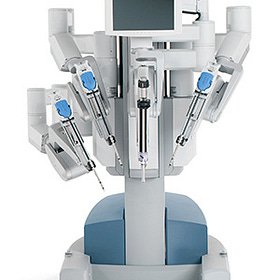Subscribe to the STEMScribe newsletter to gain full access to our materials. It’s free!
If you would like to submit a guest post to the blog, please fill out this form.
In a world where technology and artificial intelligence (AI) are designed to amplify human abilities, rather than substitute them, the medical field is no exception. In healthcare, AI has already made significant in-roads ranging from diagnostic tools to personalized medicine. However, as AI continues to advance, one question that lingers on everyone’s mind is: will AI take over the medical field?
AI is already being used in various ways in healthcare, such as diagnostic tools. This means that AI algorithms use a set of instructions given by humans to analyze and interpret medical imaging data and patient information to highlight diseases or conditions that may be present. Personalized medicine would involve taking into account each patient's characteristics and needs when designing treatment plans for them based on their condition Virtual assistants are another area of application for AI in healthcare; these are chatbots that can schedule appointments for patients as well as answer their questions regarding health.
The Pros and Cons of AI in Medicine.
Advantages: AI has the potential to diagnose complex medical conditions quickly and accurately through rapid and accurate processing of large amounts of data.
This assists doctors in identifying possible health concerns as well as constructing personalized treatment approaches, which eventually results into better patient care.
By automating tedious chores, AI can help to cut costs and allow human clinicians to concentrate on more intricate duties.
Disadvantages: The threat of AI taking over from human clinicians, particularly in routine or administrative roles, may lead to job displacement.
Additionally, artificial intelligence systems may not be able to provide similar emotional support and empathy as the natural clinicians do.
The effectiveness of this system is also dependent on the quality of data upon which it was trained; incomplete, inaccurate or biased data might impede its ability to offer accurate diagnosis or effective treatment plans.
Medical Robots
Medical robotics is the use of robotics to assist surgeons in medical procedures for more precision, accuracy, and dexterity, allowing surgeons to perform complex procedures with minimal invasiveness.
For more about medical robots:
Can Robots Ever Replace Surgeons?
The Da Vinci surgical robot is now an integral tool in the surgical field and crucial to minimally invasive surgeries, boasting over 10 million procedures. Its three to four arms offer a range of intricate and meticulous movements that according to the system’s developer are “beyond the limits of the human hand.”
Artificial Intelligence
AI technology has become an integral part of medical robotics, which supports decision-making in surgery and improves patient outcomes. Through algorithms powered by artificial intelligence, these systems can be able to analyze patients’ data, make predictions on surgical results, and provide surgeons with immediate feedback.
Robot-Assisted Minimally Invasive Surgery
Even though robot-assisted minimally invasive surgery has become more popular, it allows for complicated operations with minimum scars and reduced recuperation duration.
Soft Robotics
Soft robotics is an emerging field aimed at developing robots for safe interactions with soft tissues such as organs and blood vessels. This technology could potentially transform surgeries that involve delicate manipulation.
Telepresence Robotics
Telepresence robots have been invented to facilitate distant consultations and operations, enabling physicians to reach their patients from a far distance while improving access to healthcare services. Robotics for Neurosurgery: Current developments in robotics allow for more accurate neurosurgical techniques targeting minimal invasiveness including brain tumor resections or aneurysm repairs.
Robotics for Orthopedic Surgery
These technologies are aimed at facilitating orthopedic operations like joint replacement surgeries leading to faster healing processes of patients hence improved results besides reducing the time taken during recovery periods.
The Future
Will AI become the primary labor force while humans provide support, reversing the current roles? The need for medical practice to keep up with the ever-changing landscape of healthcare has led to a constant evolution of the field. To meet future challenges, professionals need to consistently improve their skills and knowledge by keeping pace with the latest medical technologies.
Written by Mariam Efat
The STEMScribe blog is a reader-supported publication. Subscribe to show your support. It’s free!
Consider spreading the word:




